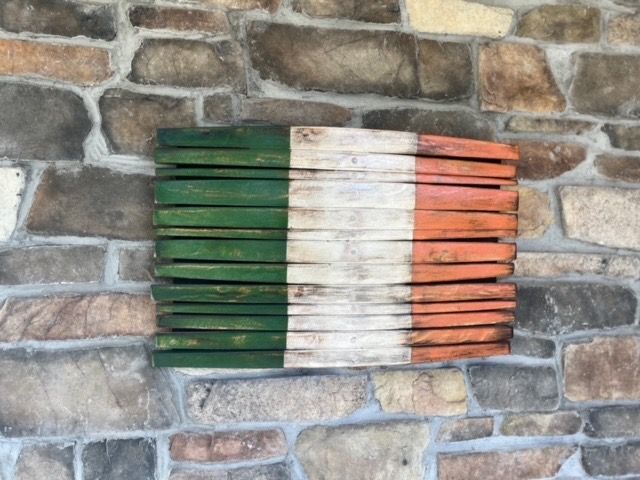Irish stew.
Recipes | By Margaret M. Johnson
Today marks the second most celebrated day on the Irish calendar, the day optimists call “Halfway to St. Patrick’s Day.” It’s a great excuse to serve some traditional Irish foods, especially since we were starved of celebrations, parades and parties this year. In the event you need a refresher course for some great dishes for your Sept. 17 event, here are a few you might enjoy: Irish Stew, Cottage Pie and Irish Soda Bread.
IRISH STEW
SERVES 4 TO 6
For centuries, the principal cooking utensils in Irish country cottages were the iron pot and black iron skillet, both of which have been used in various forms since the time of the Celts. The pot was filled with water, and whatever meat, grain, or vegetable was available was added for day-long cooking. Today, lamb is the meat of choice in Ireland’s national dish and the recipe has spawned interesting variations that use lamb shanks instead of lamb cubes, turnips instead of carrots, and stout instead of stock. Most agree, however, that this recipe is a classic.
2 tablespoons canola oil
2 1/4 pounds boneless lamb, cut into 1/2-inch pieces
2 large onions, sliced
2 to 3 large carrots, cut into 2-inch pieces
2 to 3 stalks celery, sliced
1 small turnip, cut into 1-inch pieces (optional)
2 to 3 large baking potatoes, peeled and thickly sliced
Salt
Ground pepper
1 tablespoon chopped fresh thyme
Chopped fresh flat-leaf parsley plus more for garnish
1 1/2 cups chicken stock or low-sodium chicken broth
1. Preheat oven to 300°F.
2. In a Dutch oven or large saucepan over medium heat, heat oil. Working in batches, cook lamb for about 5 minutes, or until meat is browned.
3. In a flameproof casserole, alternate layers of meat, onions, carrots, celery, turnip (if using), and potatoes, ending with potatoes. Sprinkle each layer with salt, pepper, thyme, and parsley.
4. Add stock or broth and cover tightly with a lid. Cook for 2 to 2 1/2 hours, or until the meat and vegetables are tender and stock has thickened. (Check the stew occasionally and add more stock or broth, if necessary.
5. To serve, ladle stew into shallow bowls and sprinkle with parsley.
COTTAGE PIE WITH CHEDDAR CRUST
SERVES 6
Nothing warms the heart (and the stomach) more than the mashed potato-topped casserole known as Cottage Pie. In a land where sheep were traditionally a primary food supply, it’s not surprising that lamb is the foundation for many Irish farmhouse dishes, especially this long-time favorite originally created as an economical way to use leftover lamb. The meat and vegetable pie, which is topped with a crust of mashed potatoes flavored with Kerrygold’s Cheddar or Dubliner cheese, is a great “halfway” meal. Serve it with a good red wine or a pint of Guinness!
[caption id="attachment_110357" align="alignnone" width="300"]
Filling
3 tablespoons canola oil
2 pounds ground lamb
1 tablespoon butter
1 large onion, chopped
1 garlic clove, crushed
3 carrots, diced
1/2 cup diced tomatoes
2 tablespoons tomato paste
1 1/2 tablespoon flour
1 cup beef broth
1 tablespoon chopped fresh thyme
1 tablespoon chopped fresh flat-leaf parsley
Salt
Ground pepper
Topping
3 cups mashed potatoes
4 tablespoons butter
1 cup shredded Kerrygold Cheddar or Dubliner cheese
1. In a large skillet over medium heat, heat oil. Working in batches, cook lamb for 5 to 7 minutes per batch, or until all the meat is browned. With a slotted spoon, transfer meat to a large bowl; discard fat.
2. Melt butter in same skillet. Add onion, garlic, and carrots and cook for 3 to 5 minutes, or until soft but not browned. Stir in tomatoes, tomato paste, and flour; cook 2 to 3 minutes. Stir in broth, thyme, and parsley, scraping up browned bits from bottom of the pan; return lamb to skillet and stir in peas.
3. Reduce heat and simmer, uncovered, stirring occasionally, for 10 to 15 minutes, or until mixture thickens; season with salt and pepper.
4. Preheat oven to 350°F. Coat an 8- or 9-inch baking dish with cooking oil spray; spoon lamb mixture into prepared dish.
5. In a medium bowl, stir together mashed potatoes and half the cheese. Spread or pipe the mashed potatoes over meat mixture, dot with butter, and sprinkle remaining cheese over top. Bake for 25 to 30 minutes, or until top is browned and mixture is bubbling. Serve immediately.

Irish soda bread.
IRISH SODA BREAD
MAKES 1 LOAF
One of the most popular Irish recipes in the U.S. is Soda Bread, a sweet, cakelike dessert called “Spotted Dog,” “Railway Cake,” or “Curnie Cake” in Ireland, depending on the area where it originates. Made with white flour, caraway seeds, raisins, and buttermilk, it’s really a year-round treat that’s even more delicious when spread with softened Kerrygold Irish butter and served with a cup of tea, coffee, or even a spot of whiskey! This recipe has its origins in Donegal.
3 cups all-purpose flour
2/3 cup granulated sugar
1 teaspoon salt
1 tablespoon baking powder
1 teaspoon baking soda
1 1/2 cups raisins, or half raisins and half sultanas (golden raisins)
3 teaspoons caraway seeds
2 large eggs, beaten
2 cups buttermilk
2 tablespoons butter, melted
Softened butter, for serving
1. Preheat oven to 350°F. Grease and flour a 9-inch round baking pan.
2. In a large bowl, combine flour, sugar, salt, baking powder, and baking soda. Stir in raisins and caraway seeds. Make a well in center and stir in eggs, buttermilk, and butter; transfer mixture to prepared pan
3. Bake for about 1 hour, or until top is golden and a skewer inserted into center comes out clean. Cool in pan on wire rack for 5 minutes and then invert bread onto rack and let cool completely before slicing. Serve slices spread with butter.
Margaret Johnson’s “Recipes” page also includes “Ireland Hopping: Adventures in Food, Drink, and Travel.” For further details on her work, or to order a signed copy of her new cookbook “Teatime in Ireland” (Buy One Get One Free SEPTEMBER SPECIAL), visit www.irishcook.com










